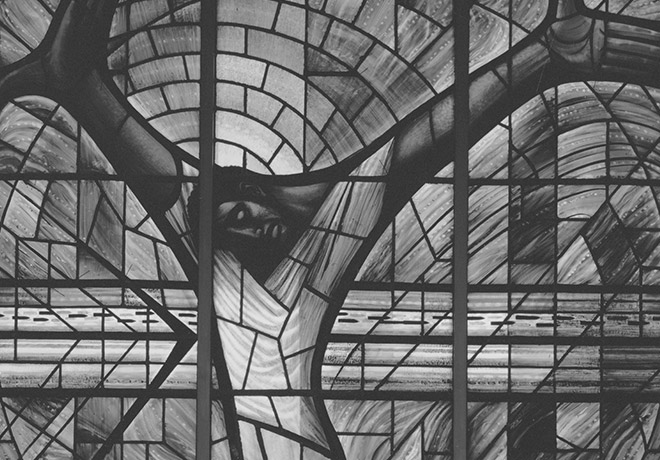One of my good friends asked me to officiate at his wedding. My friend, the groom, was of South Asian/Indian descent, and he was very proud of his cultural heritage. He had promised that the reception would, in particular, take guests on a deep dive into Indian culture. It was indeed a culturally unique experience, and I had a night to remember.
As the event drew to a close, I told him, ‘I’m jealous of you. You have such an amazing culture! It must be such a privilege to be able to reflect that beautiful culture during your wedding weekend. I wish I had a culture too.’
My friend got very serious and said, ‘Daniel, you may be white, but don’t let that lull you into thinking you have no culture. White culture is very real. In fact, when white culture comes in contact with other cultures, it almost always wins. So it would be a really good idea for you to learn about your culture.’
One of the reasons it can be difficult for those of us who are white to recognise the presence of white culture is that it has become the ‘normal’ by which we judge all other cultures.
It would be hard to overstate how caught off guard I was by this comment. I had never even considered the possibility of ‘white’ as a culture. Now he was telling me that not only was whiteness a culture, but that when it came in contact with other cultures, it always won. It felt patently unfair to group me in with every other white person he had ever met; and it felt borderline offensive to claim that my so-called culture operated off an intrinsically superior mindset.
However, I could not shake off the impact of his words. So, I went on a quest. My motives were admittedly mixed—a big part of me wanted to prove him wrong—but I also genuinely wanted to understand this notion of white culture. I wanted to know if it was real—and if it was, to understand what that meant; and I wanted to determine whether white culture really ‘wins’ when it comes in contact with other cultures.
The quest began almost 25 years ago. It has re-shaped the direction of my life over that time, and it has also had profound implications for how I understand the full dimension of Christian living. For the purposes of this article, I would like to focus specifically on the impact of white culture on mission—on how it shapes the way we bear witness to Christ and his kingdom. In Matthew 28:16, Jesus commissions us to go forth and make disciples of all the nations (ethnē); so clearly the relationship between witness and ethnicity is of utmost importance when considering mission.
What my friend told me at his wedding is a helpful framework for approaching the relationship between white culture and mission and how we can better bear witness to Christ and his kingdom:
- White culture is real.
- When it comes in contact with other cultures, white culture wins.

White Culture is real
One of the reasons it can be difficult for those of us who are white to recognise the presence of white culture is that it has become the ‘normal’ by which we judge all other cultures.
I have found the work of British sociologist Alistair Bonnett to be helpful in bringing greater clarity to this phenomenon. Bonnett conducted extensive research on white culture in both the US and UK. He noted that there was something unique about white culture, especially when observed in relation to nonwhite cultures: in both countries white culture is the ‘norm’ by which all other cultural identities are evaluated. It is an ‘unchanging and unproblematic location, a position from which all other identities come to be marked by their difference.’[1] With white culture serving as the baseline, we evaluate everyone else’s culture based on the norms we associate with white culture.
This tendency to normalise white culture is not just a secular challenge—it has tremendous impact on global mission as well. I took a seminary class with a white, racially conscious professor years ago, and he was convinced of this same hypothesis. He regularly urged his students to engage in self-examination of what we assumed to be culturally ‘normal’ and challenged us to be especially careful in the ways we normalized white theology. This assertion was particularly challenging to one of the white seminary students who was certain that he was culturally neutral in his approach to theology. He dared the professor to illustrate a concrete way in which white culture is normalised in the realm of theology.
The professor put an online catalog of classes offered at the seminary up on the screen. He pointed out there were core, required classes that were just called ‘theology’, but among the electives offered were an array of additional theology classes: black theology, Latin theology, Asian theology, etc. He asked rhetorically where the category of ‘white’ theology was. Of course there was none. He explained that the theology passed on to us from white forefathers is considered to be the normal, default standard for theology. Everyone else’s theology was defined in relation to whiteness.
There are many ways we normalize white culture. It is real, and if we do not learn to recognise it, white culture will remain the unchallenged norm by which all other cultures are evaluated in our missional efforts.
White culture wins
However, normalising white culture pales in comparison to the deepest problem of all. Genesis 1 tells us that the climax of God’s created order is humankind—that we are created in the very likeness and image of God. However, the social construct of race was engineered to communicate a very different agenda: that human value is determined by where a person falls on the racial hierarchy. Certain races in the US have been deemed better than others (read: white), allowing evils such as colonisation and slavery to thrive.[2]
The construct of race was built on a narrative that some human beings are more worthy than others, and whiteness has been the pinnacle of the racial hierarchy since its inception.
This is partly what makes white culture so challenging to see and to understand. A thoughtful analysis of it is certain to reveal many positive qualities, but it also faces us with the sinful secret of its origin. The construct of race was built on a narrative that some human beings are more worthy than others, and whiteness has been the pinnacle of the racial hierarchy since its inception.
Every aware Christian will openly reject and rebuke this notion of a racial hierarchy, since its existence is a mockery of God. The bigger question is whether we can develop the wisdom to parse out the aspects of white culture that still perpetuate this racial hierarchy, even when we individually denounce its existence.
By way of illustration, as part of my doctoral program, I spent a day visiting diverse churches in a major US city center. I was paired with another pastor for the day, and the assignment was to experience the body of Christ in its many forms, and then to debrief about what we could learn from each visit.

One of the stops was a famous black church that had a mural of a black Jesus. This pastor experienced immense discomfort at the sight of a black Jesus. When we debriefed, I asked him why. He said it was sacrilegious to portray Jesus in a historically inaccurate way, and that he wished we could have avoided visiting this church.
As part of his tradition he had seen literally hundreds of portrayals of Jesus as a white man. For centuries, this is how Jesus has been cast in Western art, often with European features such as blue eyes and light hair. This is obviously inaccurate from a historical standpoint; yet that has not stopped us from accommodating that image.
I asked him if he had felt an analogous level of unease each time he had seen Jesus depicted as white. He had not, and the contradiction between these two experiences was immediately evident. Yet he tried to defend the difference. I reminded him that not only was Jesus a Jewish, Middle Eastern man, but as a carpenter he surely spent a lot of time in the sun. If one had to guess which side of the dark/light spectrum his skin was, it would be reasonable to assume dark. If we were going to take an educated guess as to which portrayal was more historically accurate, the mural of the black Jesus was almost certainly it.
However, historical accuracy was not what this pastor’s unease was ultimately about. The deeper issue was one of cultural superiority. For reasons that this pastor was still not even aware of within himself, it just felt more comfortable to see Jesus as a white man than a black man.
Next Steps
I will never forget the day my friend told me at his wedding that I had a culture, and that I should learn about it. My friend had opened a monumental door and had left me to decide whether or not to step through it. I believe that those of us called to engage with global mission stand at this same moment.
What can we do next once we begin to awaken to this reality? Here are some suggested focus areas as we move forward on this journey:
- Learn to see white culture: the metaphor is often used that white people trying to see white culture is like a fish trying to analyse the water it lives in; they are surrounded by it and cannot see it. The water of white culture surrounds us, and it can feel difficult, and even threatening, to step outside it. However, we must learn to see that white culture is real, and learn to analyse and critique it, for the sake of the gospel.
- Increase our understanding of the intersection between the construct of race and the development of white culture: the very idea of ‘whiteness’ is a human construction, tied to the sinful creation of our modern, racial hierarchy. It is a helpful, but small step to repudiate the sinfulness that undergirds the racial hierarchy. The deeper work is learning how to spot the ways in which the narratives behind this racial construct continue to influence our approach to global mission.
- Deepen our theological analysis of the construct of race: one of the reasons that white missionaries (in particular) have such a difficult time spotting and critiquing the presence of racial narratives is that we were not given strong enough theology to support this work. There is so much rich theology ready to be applied to this work: Imago Dei, Kingdom of God, dividing wall of hostility, renewing of the mind, truth versus lies, etc. We just need to learn to integrate these into our biblical worldview.
- Examine the ways whiteness has shaped global mission: as our capacity to see the historical development of race deepens, we are then able to see more clearly the ways in which the fundamentals of mission have been shaped by white culture. As such, we must constantly revisit our assumptions and approaches, and ensure that they are not being held captive by white ideologies. How do we think about evangelism? About discipleship? About the way church should happen? These are all critical questions, but they have been historically asked through a white lens. We must learn to break free from that captivity for the sake of bearing authentic and powerful witness to Christ and his kingdom.
Endnotes
- Alistair Bonnett, ‘White Studies: The Problems and Projects of a New Research Agenda’, Theory, Culture & Society 13, no. 2 (1996): 146.
- Editor’s Note: See article by Paula Fuller entitled, ‘From Ferguson to Charleston’, in September 2015 issue of Lausanne Global Analysis https://lausanne.org/content/lga/2015-09/from-ferguson-to-charleston.
Photo credits
‘Crucifixion’ by John Petts (commons.wikimedia.org).

